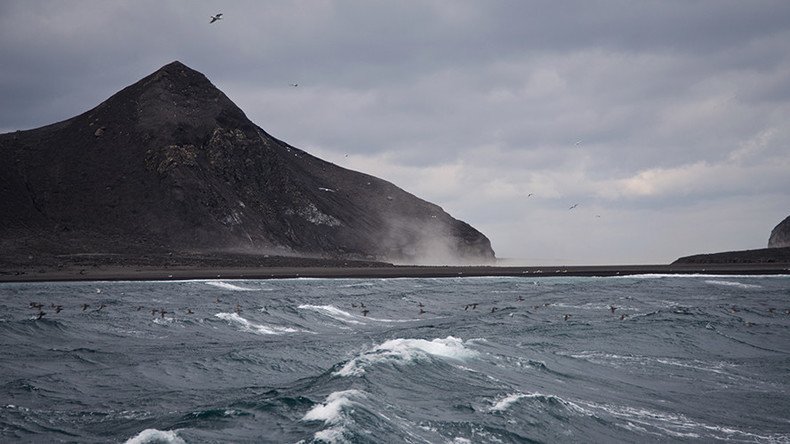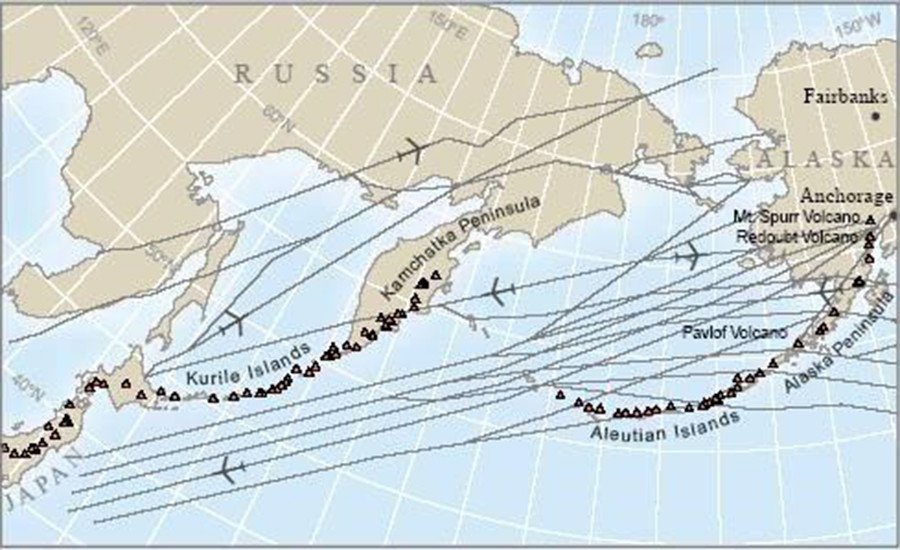Volcano eruption creates 35,000ft high ash cloud in under 1hr (PHOTOS)

Alaska’s Bogoslof volcano ‘belched’ an ash cloud 35,000ft (10,668 meters) into the atmosphere over a period of just 55 minutes.
Situated on the Aleutian Islands, the volcano erupted at 2:16pm local time Sunday, prompting the Alaska Volcano Observatory (AVO) to issue a red aviation code – the highest warning level.
Weather satellites captured in superb detail the dispersion of ash over the Bering Sea. Images from the Japanese Himawari satellite shared by the National Weather Service Ocean Prediction Center show the ash cloud clearly.
Bering Sea: explosive #Bogoslof volcanic eruption, then quick northwest dispersion of ash cloud -- via #Himawari visible imagery #akwxpic.twitter.com/weWN61Xhiu
— NWS OPC (@NWSOPC) May 29, 2017
The Bogoslof eruption ash cloud is clearly visible in this SNPP 10.5μm image captured at 23:32 UTC. @AlaskaWx@volcaniclastic@alaska_avopic.twitter.com/VH3ogJVDAQ
— Brian Brettschneider (@Climatologist49) May 29, 2017
Zoomed in version of the #ash cloud produced by the #Bogoslof Volcano just off the #Aleutian Islands. 7 pm to 8 pm satellite graphics. pic.twitter.com/9QljMSgL58
— WeatherBug (@WeatherBug) May 29, 2017
The aviation code was later lowered to ‘orange’ as no further ash emissions occurred following Sunday’s explosion, and seismic activity was low.
The AVO advised however that further ash producing eruptions could occur at any time and without warning.
AVO geoscientist Max Kaufman (@UAFGI ) aerial photos of #Bogoslof Is, 8 May 2017, thanks to the USCG Air Station Kodiak & USCG Cutter Mellon pic.twitter.com/9U0P7PybVA
— Alaska AVO (@alaska_avo) May 16, 2017
Bogoslof Volcano has erupted about 40 times since December, after staying quiet for the previous quarter-century. It took a two-month break earlier this year before erupting again on May 16.
READ MORE: 3-hour volcanic eruption in Alaska threatens villages with ash
Ash from southwest Alaska volcanos is a major threat for airliners operating between North America and Asia.
North Pacific and Russian Far East air routes, as shown in the image below, pass over or near more than 100 potentially active volcanoes, marked in the map with red triangles.

When ash cloud rises above 20,000ft (6,096 meters) it has the potential to damage and even stop jet engines. Volcanic ash melts at jet engine temperatures, and can cause engine failure, according to the United States Geological Survey (USGS)












